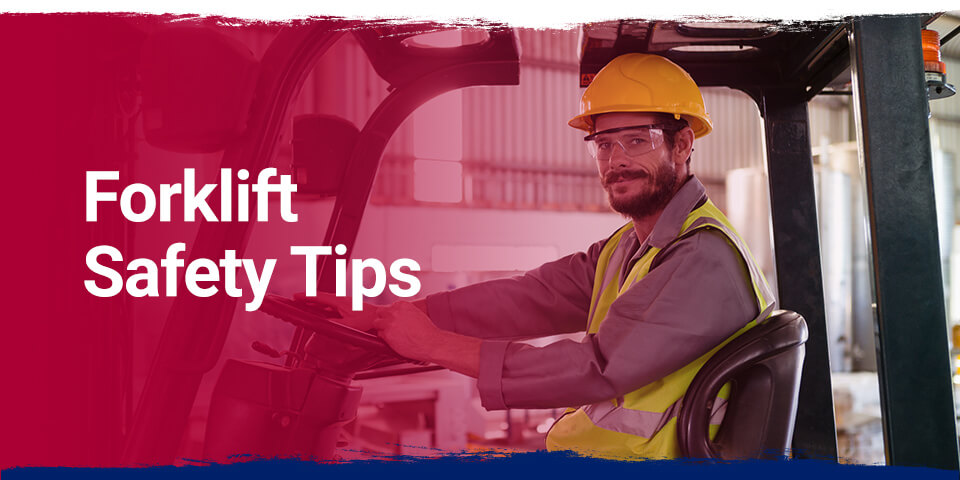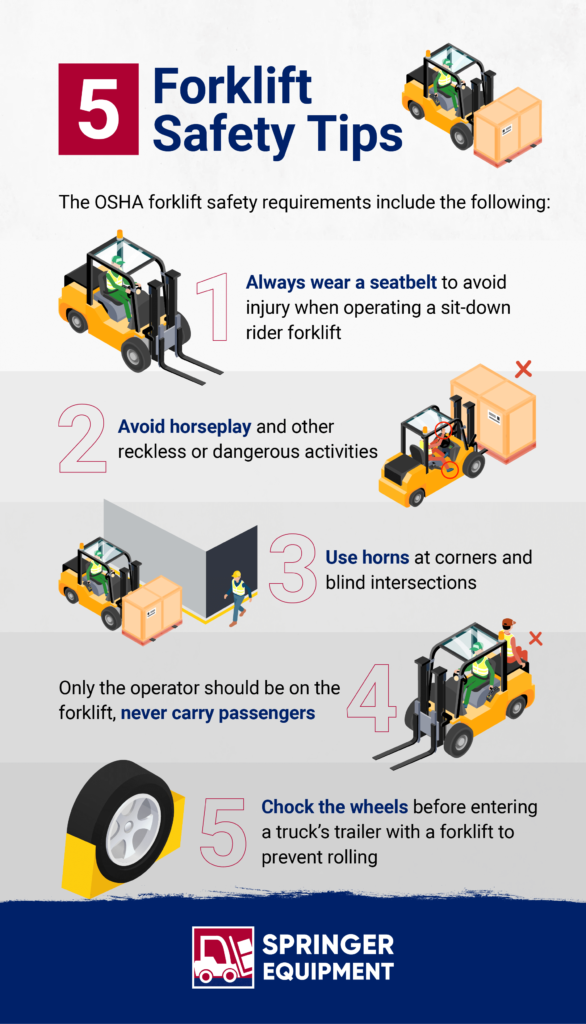
A forklift’s main purpose is to lift and transport heavy loads. Depending on the model, the lift capacity of these versatile vehicles can range from 3,000 to 50,000 pounds. Forklifts operate in warehouses, distribution centers, and other busy environments. They work alongside other mobile and stationary equipment and busy workers performing various job duties.
While taking these factors into consideration, adhering to strict safety procedures when operating forklifts is crucial. However, the risk of forklift-related accidents and injuries is high. The leading causes of these mishaps are failing to perform daily equipment inspections, inefficient audible or visual warning device, and neglecting to use the horn when necessary.
Adequate training and knowing the do’s and don’ts of operating a forklift can help prevent these accidents and create a safer work environment.
How to Operate a Forklift Safely

The Occupational Safety and Health Administration (OSHA) is a federal government agency responsible for developing and enforcing standards for safe and healthy workplaces. The OSHA forklift safety requirements include the following:
- Always wear a seatbelt when operating a sit-down rider forklift.
- Avoid forklift horseplay and other reckless or dangerous activities when using the equipment.
- Forklifts contain loud, grating horns — use them at corners and blind intersections to alert other operators or workers to ensure proper forklift horn safety.
- Only the operator should be on a forklift. Never carry additional riders or passengers.
- Chock the truck and trailer wheels before entering a truck’s trailer with a forklift to prevent rolling while handling a load.
- Ensure the forklift is stationary when you elevate or lower the fork.
- Verify that the forks are resting on the ground after parking the vehicle.
- Don’t smoke in areas where you’re refueling or recharging batteries.
- Inspect you stationary forklift at the beginning of each shift to ensure it’s in safe operating condition.
- Never attempt to use the equipment to elevate another worker to reach a higher level within the warehouse or facility.
OSHA requires employers to provide appropriate training and certification for forklift operators based on the type and class of equipment they use. Operators must retrain or recertify every three years depending on the circumstance. Companies must have a proper and effective documentation process, otherwise the training or certification never happened according to OSHA standards.
Contact Springer Equipment for More Forklift Safety Tips
Springer Equipment has been a trusted equipment partner for over 30 years. In addition to a wide range of used forklifts for sale at affordable prices, we offer a diverse selection of parts to maximize the effectiveness of your fleet.
Contact us for more information regarding how to prevent forklift accidents in your work environment.

